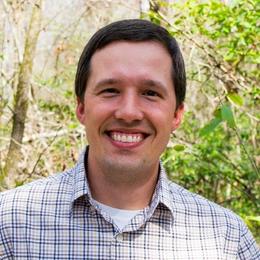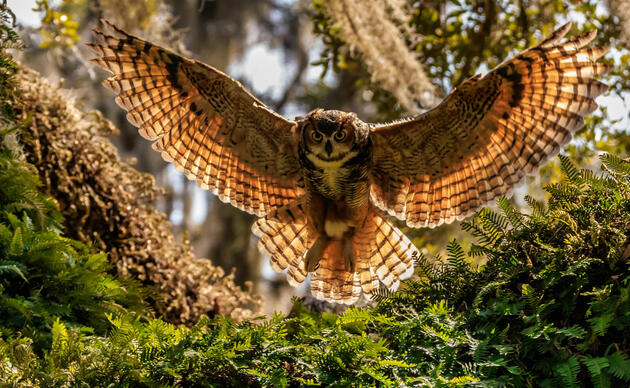In July of 2014, my colleagues and I netted a Prothonotary Warbler—whom we called Longshot—in Francis Beidler Forest.
To learn more about this little bird, we outfitted him with an even smaller geolocation device, which records light-level data to establish his location, and put four colored bands on his legs to ensure we’d recognize him if he returned to Beidler.
Sure enough, nine months later, while leading a group of visitors through the forest, I spotted a banded Prothonotary Warbler. A quick examination of the bands on the bird’s legs made it clear: Longshot had returned home!
Migration is the most dangerous part of a bird’s life, so to think that we put a device on this one bird, and this same bird returned to the same spot the following year is nothing short of amazing.
From the data on Longshot’s geolocation device, we learned that when this little guy left Dorchester County, he flew 5,000 miles south to the nation of Colombia, before returning home to Beidler just a few meters away from the exact spot where we’d caught him the summer before.
Since the 1960s, the Prothonotary Warbler population has declined approximately 1 percent each year. In an effort to curb this startling decline, researchers are working to learn more about where the Prothonotary Warbler migrates each winter. Because the Carolinas are home to 20 percent of the world’s population, it makes sense that Audubon South Carolina is helping lead the charge on these efforts.
In addition to providing vital nesting habitat in the 18,000-acre bird sanctuary that is Beidler Forest, we are continuing our tracking efforts to learn more about these beautiful yellow songbirds. Last year, we put out eight geolocators. From the three we’ve recovered, we know that each bird traveled to Colombia, like Longshot, before returning to Beidler Forest—often the exact same spot—the next year.
Universities and conservation organizations across the country are deploying similar technology and sharing results as birds make their way home. Using this data, Audubon South Carolina and collaborators are looking toward next steps: forming partnerships with people in Central and South America to help ensure the birds are protected on both ends of their journey.
Our tracking work at Beidler is possible in part thanks to volunteers who help net and band birds, and also help locate those birds on their return home. We also rely on the generosity of donors to help fund the geolocators and groundbreaking research the technology is driving forward.
To learn more about this project, contact me, Matt Johnson at mgjohnson@audubon.org.





